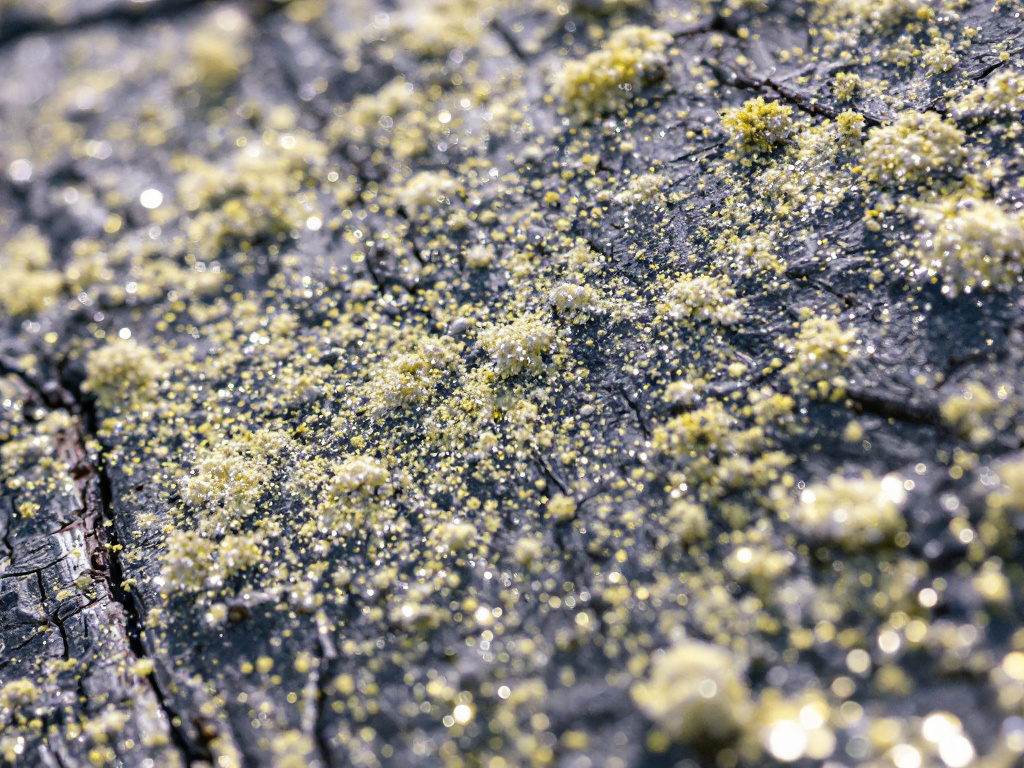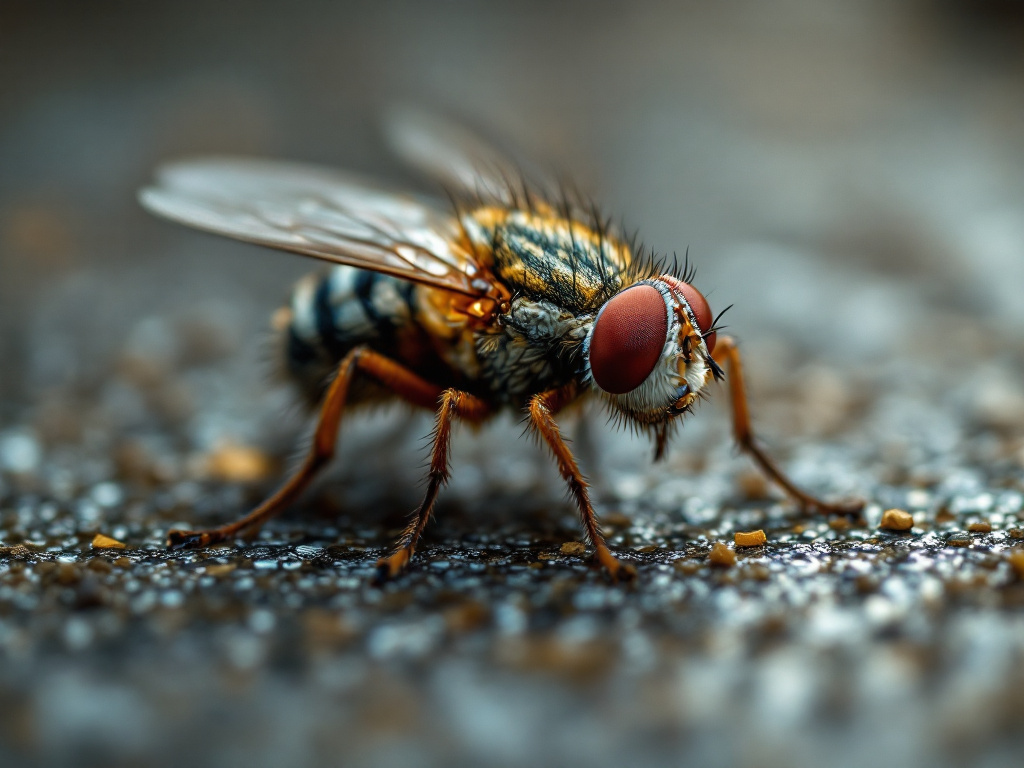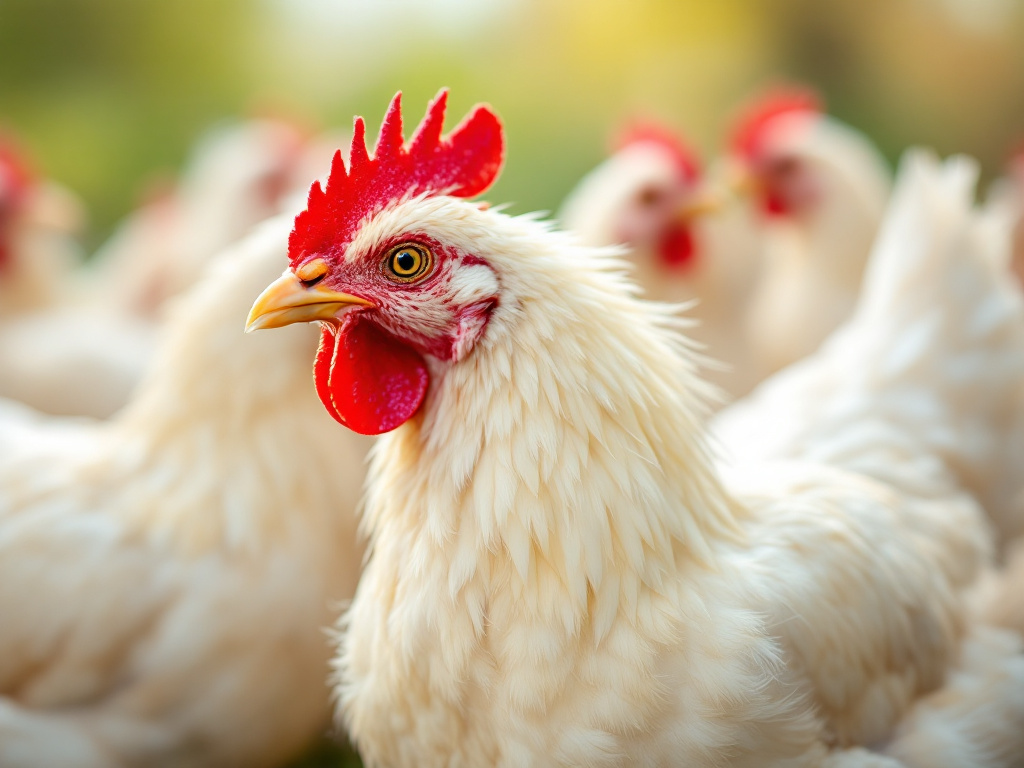If you’ve ever walked out to your car in spring and found it coated in a yellow-green dusting, you already know the culprit: tree pollen. In North Florida, where forests frame neighborhoods and backyards alike, that pollen isn’t just a nuisance—it’s a health issue. A new University of Florida study sheds light on how the very trees that keep our communities shaded and beautiful may also be driving allergy problems in places like Clay County.
Why Trees Matter—and Why They Make Us Sneeze
Trees are more than scenery here. They cool our streets in Middleburg, soften traffic noise along Blanding Boulevard, and provide habitat for songbirds that brighten early mornings in Green Cove Springs. But trees also produce pollen—tiny reproductive grains that float on the wind in staggering numbers.
Not all pollen is equal. Trees that rely on insects like bees to spread pollen don’t release much into the air. But wind-pollinated trees, such as pines and oaks—the very species that dominate yards and pastures in Clay County—release clouds of it each spring. That’s when allergy sufferers feel it most, with watery eyes, sneezing, congestion, and in severe cases, asthma flare-ups.
Counting Allergens, One Tree at a Time
Researchers use a tool called the Ogren Plant-Allergy Scale (OPALS) to rank trees from 1 (least allergenic) to 10 (most allergenic). Female trees of some species, like waxmyrtle and holly, rank low because they don’t release pollen. Their male counterparts, however, rank much higher, producing the pollen that coats ponds, porches, and pickup trucks across North Florida each spring.
Some Clay County favorites are friendlier to allergy sufferers than others. Southern magnolia, with its glossy leaves and fragrant blooms, scores a mid-level 5. Tulip poplar and sparkleberry score even lower, meaning they’re less likely to irritate sinuses. On the other hand, laurel oaks and river birch rate high, though birch at least has a short blooming season.
Weather’s Role in Pollen Season
Anyone who works outside—whether tending cattle in Keystone Heights or mowing lawns in Oakleaf—knows pollen isn’t the same every year. Weather plays a major role. A hard freeze can delay pollen release, while a mild winter, like the ones Florida often sees, can kickstart allergy season as early as January. Windy days scatter pollen farther and wider, while rain offers temporary relief by knocking pollen from the air.
Why This Matters in Clay County
With nearly one in four Clay residents under 18 and another 17 percent over 65, the county has large groups vulnerable to allergies and asthma. Families with kids in 4-H programs, seniors tending backyard gardens, and commuters facing 30-minute drives with windows down are all affected by seasonal pollen. Allergies cost Americans $18 billion a year in health expenses—lost workdays, doctor visits, and medication. For a fast-growing county like Clay, balancing tree cover with community health is more than an academic concern.
What Residents Can Do
The UF researchers suggest practical steps:
Choose low-allergy trees when planting, favoring species with OPALS ratings of 5 or less.
Opt for female trees in species where male trees produce heavy pollen.
Plan around pollen season: Dry clothes indoors, limit outdoor chores on windy days, and shower after working outside.
Maintain filters: Regularly replace air conditioner and air purifier filters during peak season.
For Clay County residents, the message is clear: trees are vital to our way of life, but so is smart planning. Selecting the right trees for yards, parks, and new developments can help reduce the springtime allergy burden without sacrificing the shade and character that make North Florida living what it is.
As UF’s research reminds us, the trees around us are both friends and foes. With a little foresight, Clay County can keep enjoying the beauty of its urban forest—while sneezing a little less.
Category: Health
-

When Shade Turns Sneezy: How Clay County’s Trees Affect Allergy Season
-

“Understanding Drain Flies: Essential Tips for Polk County Residents”
Image generated by flux-ai.io & content generated by ChatGPT Version 4o-mini
The Buzz About Drain Flies: What Polk Residents Should Know
If you’ve ever noticed small, fuzzy flies flitting around your bathroom or kitchen, you might be dealing with drain flies, also known as Psychoda spp. While these little creatures are often harmless, a recent study sheds light on their biology and the challenges they can pose, especially in humid areas like Polk County, Florida.
What Are Drain Flies?
Drain flies are small, moth-like insects that typically grow to about 2.5 to 4.5 mm in length. They are often found resting on the walls of bathrooms or near drains, where they lay their eggs in moist organic matter. The larvae, which look somewhat like tiny white worms, thrive in areas with wet debris, making bathrooms, kitchens, and even outdoor drains prime locations for their development.
Although drain flies do not bite or transmit diseases, they can become a nuisance when their populations grow. Large infestations can cause respiratory problems due to the fine scales that can fall from their wings and bodies. This is something to keep in mind, especially if you or your family members suffer from allergies or asthma.
A Life Cycle That Thrives in Humidity
The life cycle of a drain fly is fairly quick, typically taking about 21 to 27 days from egg to adult, depending on the temperature. With Polk County’s warm climate, especially during the summer months, these flies can reproduce rapidly. Females can lay up to 100 eggs at a time, and if conditions are right, you might find yourself with a small swarm in a matter of weeks.
Drain fly larvae prefer to stay near the surface of damp soil or organic material to breathe. They can even survive in sewage systems, which is why they are often found near poorly maintained drains. This adaptability means that if you have standing water or organic buildup in your home, you could be unknowingly providing a perfect breeding ground for them.
How to Manage Drain Fly Populations Responsibly
For Polk County residents, knowing how to manage drain flies can help keep your home comfortable and protect your local environment. Here are some simple steps you can take:
-
Clean Drains Regularly: Use a metal pipe brush to scrub your drains and remove any organic material where flies may lay their eggs. Pouring boiling water down the drain can also help flush out debris, reducing the potential for fly breeding.
-
Reduce Moisture: Since drain flies love damp environments, it’s crucial to fix any leaks in your plumbing and ensure that areas like bathrooms and kitchens are well-ventilated to reduce humidity.
-
Check for Breeding Sites: If you suspect drain flies, tape over your drain for 24 hours. If you find flies stuck to the tape, it’s a sign you have a breeding problem that needs addressing to maintain a healthy indoor environment.
-
Natural Remedies: In addition to cleaning, some residents have found that using natural solutions, like vinegar traps or essential oils, can deter these pesky flies, minimizing the need for chemical interventions.
Why This Matters to Polk County Residents
Polk County’s warm, humid environment is ideal for drain flies, especially in places where water accumulates, like around agricultural areas or during the rainy season. With a significant number of households and businesses relying on proper drainage and sanitation, managing these flies is not just a matter of comfort but also public health.
By staying informed and proactive, residents can reduce the chances of drain fly infestations, making our homes and community a healthier and more pleasant place to live. Remember, maintaining cleanliness and moisture control is essential for our beautiful Florida climate and ecosystem, ensuring that we do not inadvertently harm our water quality or attract unwanted pests.
References
EENY-716/IN1226: Drain Fly Psychoda spp. (Insecta: Diptera: Psychodidae). (n.d.). Ask IFAS – Powered by EDIS. https://edis.ifas.ufl.edu/publication/IN1226
-
-

“Nourishing Health: How Smart Eating Can Combat Chronic Inflammation in Levy County”
Image generated by flux-ai.io & content generated by ChatGPT Version 4o-mini
Eating Your Way to Better Health: How Diet Can Reduce Chronic Inflammation
In Levy County, where agriculture plays a crucial role in our community, understanding how our diets affect our health is vital. A recent study highlights the importance of our food choices in reducing chronic inflammation—a condition linked to serious diseases like heart disease, diabetes, and obesity.
What Is Chronic Inflammation?
Inflammation is a natural response of the body to injury or infection. Think of it as your body’s alarm system, sending help to heal cuts or fight off illnesses. However, when this alarm stays on for too long—a condition known as chronic inflammation—it can lead to various health issues. This is like leaving a fire alarm ringing even after the danger has passed; it can become a nuisance and even cause damage.
The Impact of Diet on Inflammation
The study emphasizes that what we eat can significantly influence inflammation in our bodies. Many of us in Levy enjoy hearty meals with lots of meat and processed foods, which can contribute to chronic inflammation. The typical American diet is high in ultraprocessed foods—items loaded with additives and sugar—and low in fruits, vegetables, and whole grains. This kind of eating can disturb our gut health and immune system, leading to increased inflammation.
For example, if you often grab a quick, processed snack instead of a fresh fruit or vegetable, you might be choosing a path that could lead to health problems down the line.
Foods That Fight Inflammation
So, what can we do to help reduce inflammation? The study suggests focusing on a diet rich in fruits, vegetables, whole grains, and healthy fats. Here are some local-friendly recommendations:
-
Fruits and Vegetables: These are packed with vitamins and minerals. Consider visiting local farmers’ markets for fresh produce. Foods like blueberries, leafy greens, and sweet potatoes can help lower inflammation markers in the body.
-
Whole Grains: Switch to whole grain bread or brown rice instead of white bread and white rice. Whole grains contain more fiber and nutrients that are beneficial for health. You can easily find whole grain products in grocery stores around Levy.
-
Healthy Fats: Instead of using butter, try olive oil in your cooking. Olive oil is known for its anti-inflammatory properties. You might even consider adding fish high in omega-3 fatty acids, like salmon, to your diet.
-
Dairy: Consuming low-fat dairy products has been shown to help reduce inflammation. If you have a dairy farm nearby, fresh milk and yogurt can be both nutritious and locally sourced!
Local Lifestyle Considerations
Living in Levy County, where many residents are involved in agriculture and outdoor activities, there are ample opportunities to incorporate these healthy foods into your daily routine. Engaging in local 4-H programs can also teach our youth about sustainable farming and healthy eating, allowing them to grow up with better food choices.
Moreover, with a growing emphasis on health within our community, local schools and organizations can encourage eating habits that promote overall well-being. This is especially important for our younger population, who can benefit from learning about nutrition early on.
Conclusion
In summary, we have the power to influence our health through our food choices. By focusing on a diet rich in fresh produce, whole grains, and healthy fats, we can combat chronic inflammation and promote better health for ourselves and future generations. Let’s take advantage of Levy County’s agricultural bounty to make healthier choices and support our local farmers while we’re at it!
References
FSHN20-43/FS402: Diet and Chronic Inflammation. (n.d.). Ask IFAS – Powered by EDIS. https://edis.ifas.ufl.edu/publication/FS402
-
-

“Strengthening Chicken Health: The Impact of Immune System Insights in Madison County Agriculture”
Image generated by flux-ai.io & content generated by ChatGPT Version 4o-mini
Understanding Chicken Health: The Role of Their Immune System
In Madison County, where agriculture plays a vital role in our economy and way of life, understanding how to keep poultry healthy is essential for both farmers and the community. Recent research by scientists Gary D. Butcher and Richard D. Miles sheds light on the avian immune system, which is crucial for preventing diseases in chickens and ensuring they thrive. This knowledge not only benefits local farmers but can also impact the quality of poultry products available to consumers in our area.
What Is the Avian Immune System?
The avian immune system has two key components: the non-specific (or innate) immune system and the specific (or acquired) immune system. Think of the non-specific immune system as the first line of defense, much like a sturdy fence around your property. It includes genetic factors, body temperature, and physical barriers that help keep harmful germs out.
For instance, some chicken breeds have genetic traits that make them resistant to certain diseases, such as the lymphoid leukosis virus. Additionally, chickens have higher body temperatures than many other animals, which helps them fend off infections. In simple terms, the body’s natural defenses help keep chickens healthy without needing constant medical interventions.
Why Non-Specific Immunity Matters
Often, farmers focus heavily on vaccinations and antibiotics to protect their flocks. However, this research emphasizes the importance of non-specific immunity. Good management practices, such as maintaining clean living environments and providing balanced nutrition, can enhance these natural defenses. For example, just like how a well-maintained garden is less likely to attract pests, a clean poultry house can prevent diseases from taking hold.
In Madison, where many residents are involved in agriculture, paying attention to these factors can lead to healthier chickens. This not only improves the well-being of the birds but can also enhance the quality of the eggs and meat that local farms produce.
The Role of Specific Immunity
The specific immune system is like a specialized security team that remembers past intruders. When a chicken is exposed to a disease, its body produces antibodies—special proteins that recognize and fight off that specific disease. This process takes time, which is why vaccinations are vital. They help prepare the chickens’ immune systems to respond quickly if they encounter the disease in real life.
The research notes that there are different types of antibodies which work in various ways. For example, some antibodies provide local protection in the chicken’s respiratory system, while others circulate throughout the body. Understanding this can help farmers know when to vaccinate their flocks for maximum effectiveness.
What This Means for Madison County
For residents of Madison County, the implications of this research are significant. By applying this knowledge, local farmers can improve flock health and productivity. Healthier chickens lead to better-quality eggs and meat, which benefits everyone in the community—from farmers to families buying groceries.
Furthermore, with Madison County’s focus on agriculture and natural resources, investing in better poultry health practices can enhance the local economy. As farmers produce healthier livestock, they may see increased profits, which can, in turn, benefit the entire community through job creation and economic growth.
In conclusion, understanding the avian immune system helps us appreciate the complexities of poultry health. By recognizing the importance of both non-specific and specific immunity, farmers in Madison County can take proactive steps to ensure their flocks remain healthy, ultimately benefiting everyone in our community.
References
VM74/VM016: The Avian Immune System. (n.d.). Ask IFAS – Powered by EDIS. https://edis.ifas.ufl.edu/publication/VM016
